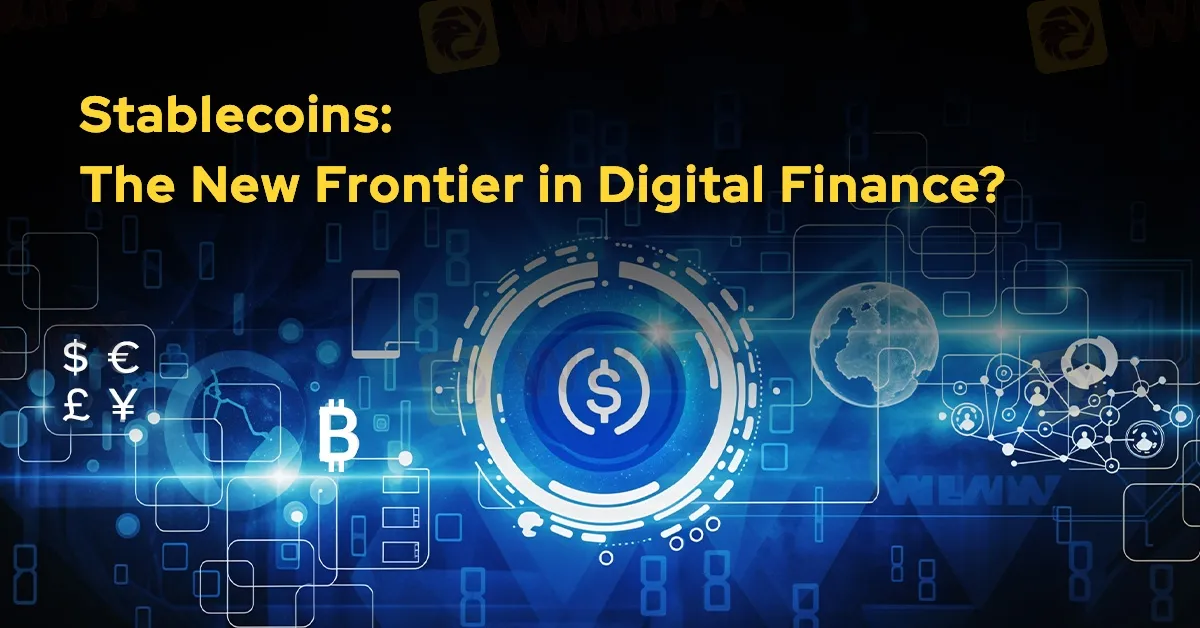简体中文
繁體中文
English
Pусский
日本語
ภาษาไทย
Tiếng Việt
Bahasa Indonesia
Español
हिन्दी
Filippiiniläinen
Français
Deutsch
Português
Türkçe
한국어
العربية
Stablecoins: The New Frontier in Digital Finance?
abstrak:In 2024, while Bitcoin’s surge past US$100,000 captured global attention, financial institutions turned their focus to stablecoins. Will stablecoins be the new frontier in digital finance for the year of 2025?

In 2024, while Bitcoins surge past US$100,000 captured global attention, financial institutions turned their focus to stablecoins — cryptocurrencies designed to maintain a consistent value. Unlike the volatile nature of Bitcoin, stablecoins are typically pegged to traditional currencies, such as the US dollar, and have become a vital part of the digital asset landscape.
Major players in the financial industry, including Visa, PayPal, and Stripe, have been investing in stablecoin projects. The appeal lies not only in their stability but also in the opportunity for issuers to invest backing reserves in short-term US Treasuries, yielding significant returns. Additionally, stablecoins are increasingly being used for everyday transactions, bypassing the volatility of other digital currencies.
Industry observers note that demand for stablecoins has risen sharply among global corporations. Digital asset venture firms have highlighted their growing use in underserved sectors such as global contractor payments, trade finance, and remittances. Stablecoins enable users to receive US dollars quickly and efficiently, avoiding the delays, high costs, and failure rates often associated with traditional banking systems.

The stablecoin market has grown to a valuation of approximately US$205 billion, with Tether‘s USDT leading the sector. However, its dominance is being challenged as regulatory frameworks evolve. The European Union’s Markets in Cryptoassets (MiCA) regulations now require stablecoins on centralised exchanges to be issued by entities holding e-money licences. Tether has yet to meet this criterion, prompting several EU-based exchanges to delist its token. In contrast, Circle, Tethers main competitor, secured the necessary licence in July, positioning itself strongly in the European market.
In the United States, leading companies are launching initiatives to capitalise on the stablecoin boom. Visa unveiled the Visa Tokenized Asset Platform to support banks in issuing stablecoins, while payments firm Stripe acquired a fintech platform specialising in stablecoin transactions. PayPal has already introduced PYUSD, its own stablecoin, developed in collaboration with Paxos. The trend demonstrates a growing recognition of stablecoins as an attractive revenue stream for businesses looking to diversify their services.
Despite their benefits, stablecoins come with risks. The collapse of TerraUSD in 2022, an algorithmic stablecoin, serves as a stark reminder of the potential vulnerabilities in the sector. Terras failure triggered a market-wide sell-off, erasing US$200 billion in cryptocurrency value and leading to the downfall of several digital asset companies.
Regulatory clarity remains a challenge in the United States, where federal frameworks for stablecoins have yet to be established. However, the European Unions MiCA rules offer clear guidance, spurring adoption among Europe-based companies. Experts suggest stablecoins provide a viable alternative to traditional fintech models, which often face stricter banking regulations.

Disclaimer:
Ang mga pananaw sa artikulong ito ay kumakatawan lamang sa mga personal na pananaw ng may-akda at hindi bumubuo ng payo sa pamumuhunan para sa platform na ito. Ang platform na ito ay hindi ginagarantiyahan ang kawastuhan, pagkakumpleto at pagiging maagap na impormasyon ng artikulo, o mananagot din para sa anumang pagkawala na sanhi ng paggamit o pag-asa ng impormasyon ng artikulo.
Broker ng WikiFX
Exchange Rate






